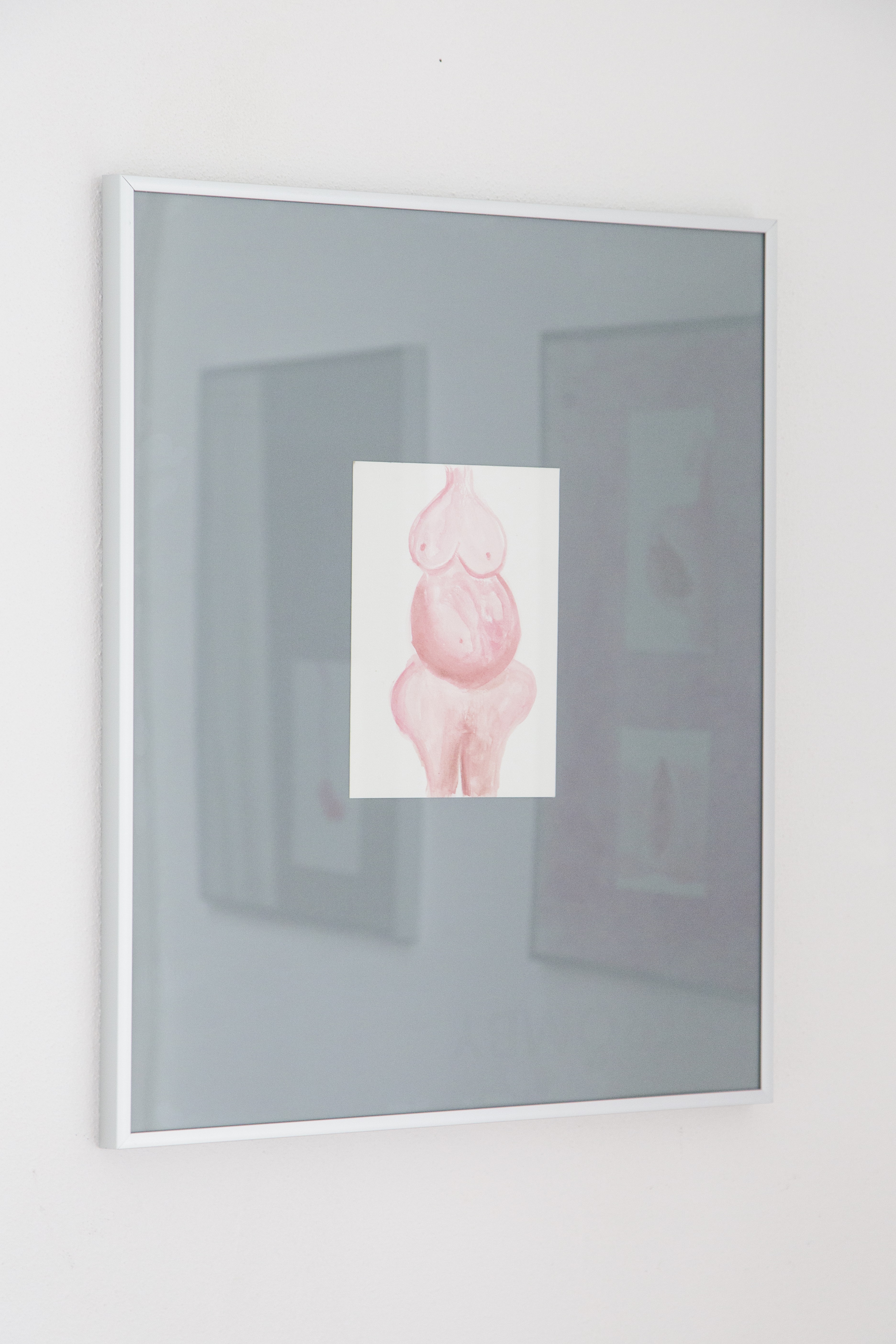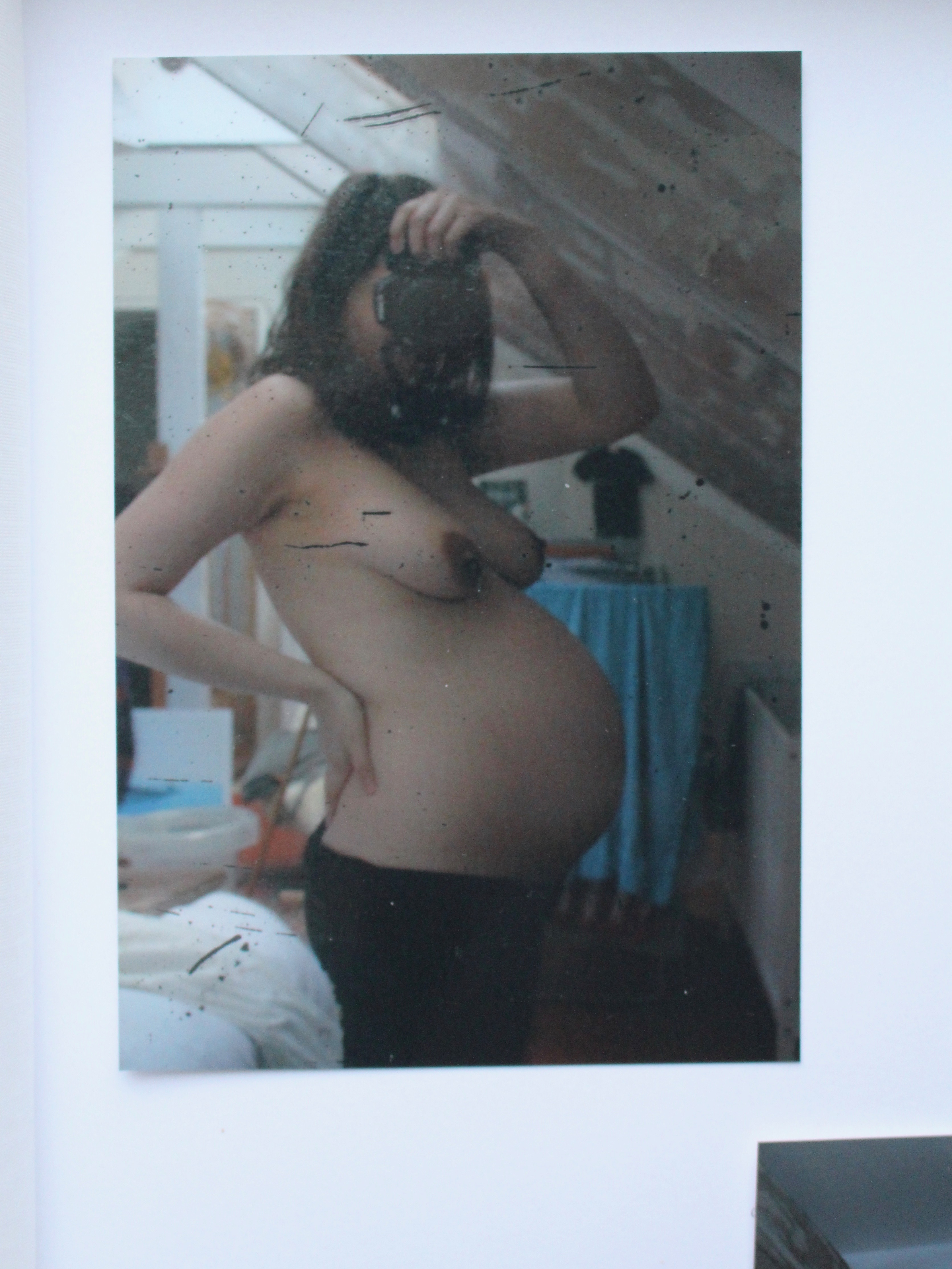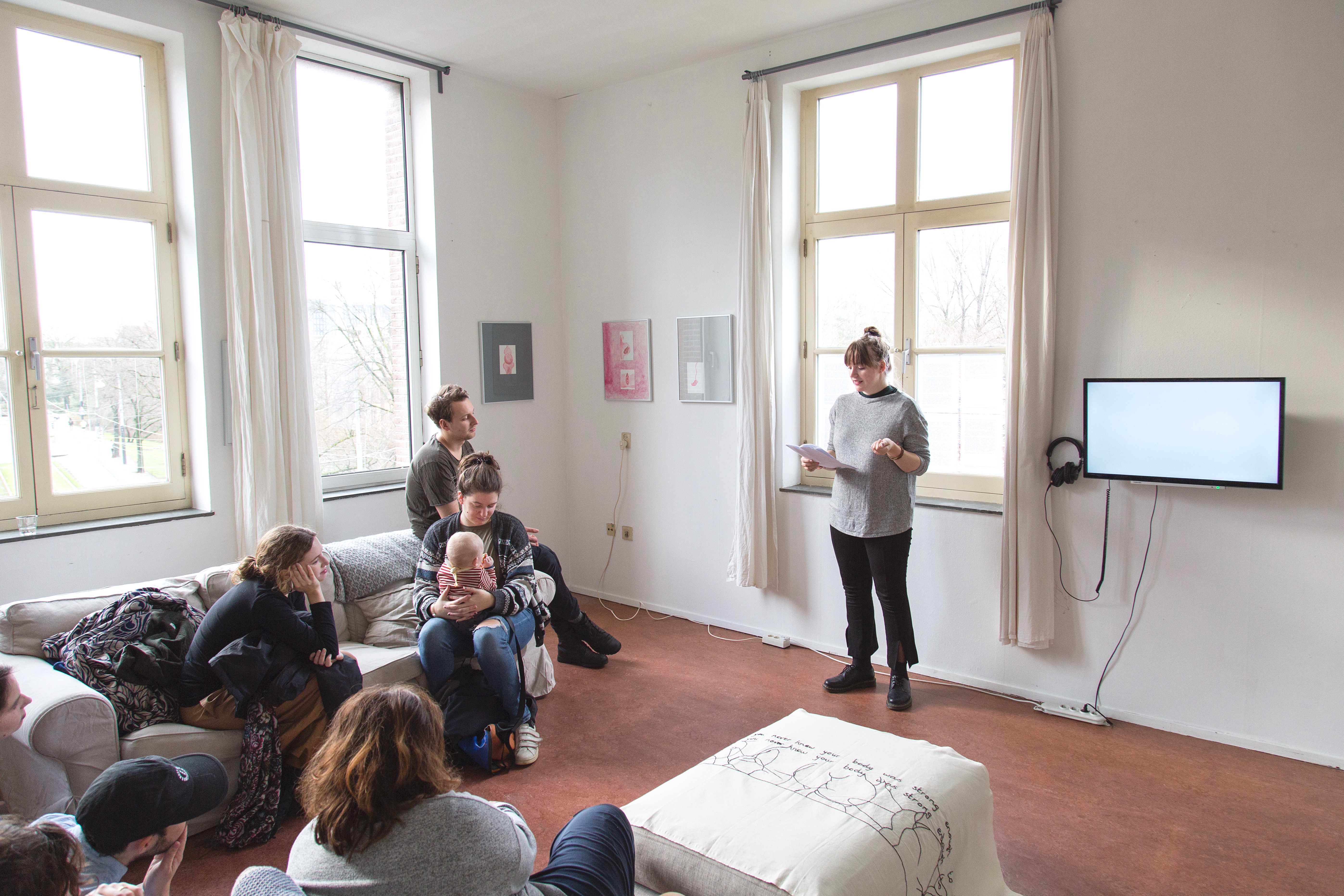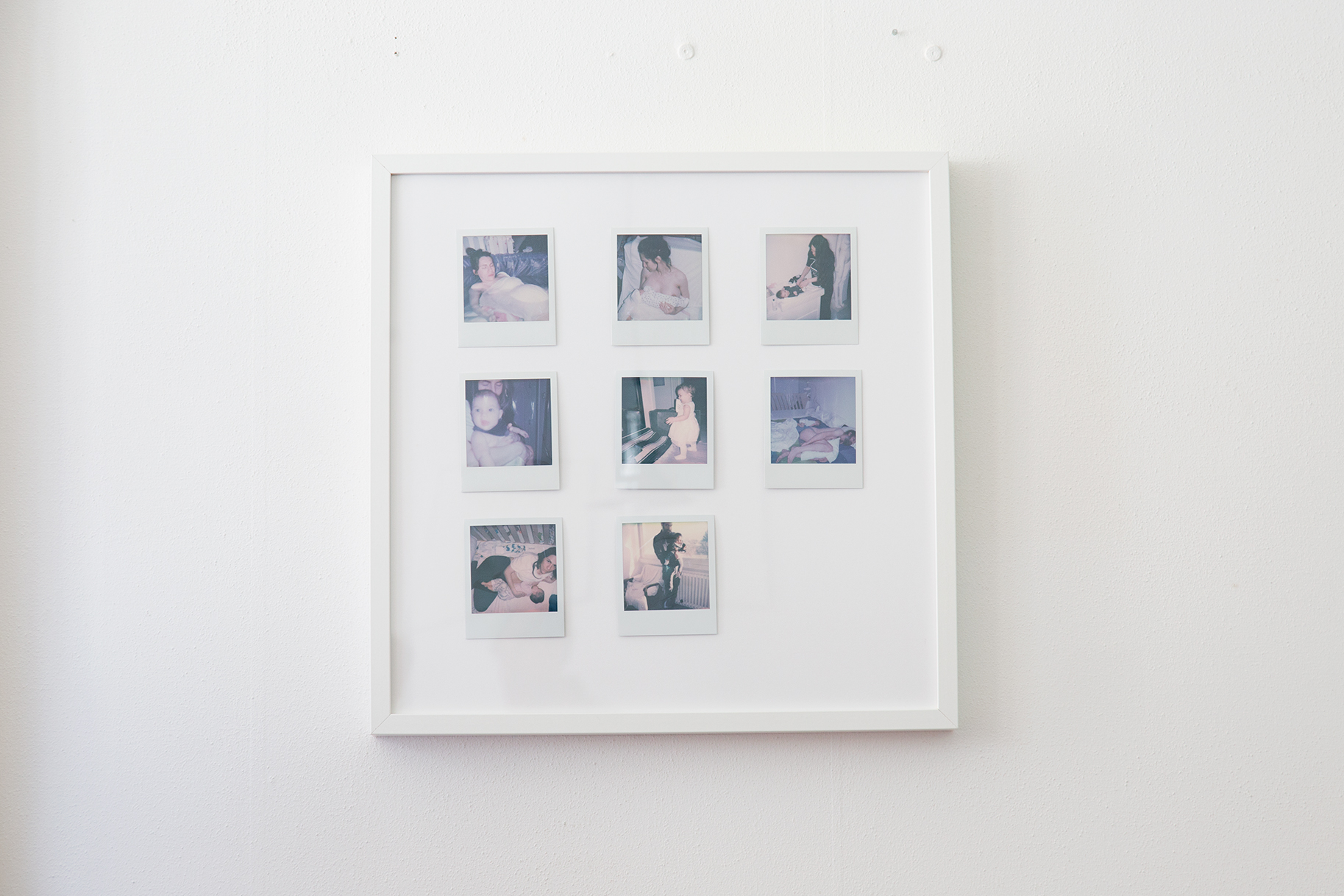MOM 2: Art and the Maternal
23 to 31 March is the Dutch National Week of the Book. The month March will be devoted to this year's theme ‘de moeder de vrouw’, as the Month of the Mother (MOM). This week: how art contemplates experiences of childbirth and postpartum trauma.
In a series of exhibitions on maternity a group of 11 artists question our social comprehension of (maternal) pain, isolation and trauma. In this guest blog I would like to share some works that were part of the series (supported by Mondriaan Fund) and elaborate on the associated research on the collective memory within a hyperpersonal experience: i.e. birth and life postpartum.

Rania Atef, Do I look like a seahorse? (2018); watercolour on paper, photo courtesy of Kyle Tryhorn.
My daughter was born three years ago and the particular loneliness that I experienced during labor still haunts me at times. I remember, so vividly, that all I could think was: all these people they ain’t me. A certain, penetrating isolation. It is not to be understood but to be felt. “When an event or situation is so unprecedented in our lived experience and even in our imagination, it leads to a schism of some sort – a schism between the traumatic experience itself and the ability to work through it because there are no frames of reference through which you can do so,” says Ali Sahin in the reading of his essay “Press unmute: trauma and the impossibility of talking about it” [1].
The neural changes that take place in a prospective mother heighten her mental and emotional focus in order to take care of a hugely dependent newborn. Her sensibility intensifies temporarily. In order for a baby to survive, a mother is forced into a state of tunnel vision – maternal amnesia – which enables a mother to block external stimuli and has the brain enhance its empathic capacities. As a mother you need to be not only one, but you need to be the Other, too.
As that particular scent of sweet amniotic fluid fades and the novelty of a newborn wears off, the complexities of the maternal reveal themselves. At times I experienced the maternal as being a complete dissociation of all accumulated logic. As the raw, peeled onion that I was I had to rebuild my sense layer after layer after layer. The inexactness of the memory, due to temporal neural changes and, with that, the unavailability of forms of representation through which the event can be experienced[2], makes it almost impossible to process said events. I talk to mothers and recognize their struggle with the involuntary tendencies that maternity embodies as I hear Sylvia Plath echoing through all their stories: what I want back is what I was[3]. What they want back is their ability to understand and sustain the world that differs exorbitantly from life they knew.

Annabel Kanaar, The public body (2019). New media, courtesy of the artist.
Maternity is a continuous process that is colored by uncertainty and not-knowing and unceasingly forces a mother into something new and exploratory, dissonant and ever-changing. As Maggie Nelson writes in The Red Parts: “One doesn’t find a non-anxious state once and then it persists forever – you have to keep finding it again and again”. An unprecedented appeal is made to the extremes of the mother's ambivalence.
The exhibition series, named Too much here and barely there, is an ongoing research concerning the idiosyncratic ways in which we relate to maternal life. The artists in this series aim to reconsider their personal experience and look for a collective memory that can be contextualized in a community wide dialogue. “Being a mother [...] is an ever-changing way of living that redefines itself over and over again. This contingency is something we cannot really escape, even though we often would like to,” states Wanda Thormeyer in her piece Yo mama (2018), a work that consists of 22 letters written to her 3 months old son. “If I manage to go beyond the boredom and annoyance, I experience a deep patience and satisfaction. I feel everything is okay.”

Wanda Thormeyer, Yo mama (2019); performance installation, photo courtesy of Kyle Tryhorn.

M.I. Kadelburg, Future, untiled (2017); photography, photo courtesy of Kyle Tryhorn.
Sharing an emotional experience demands an awareness for the moment where intimacy becomes exclusive and narcissistic. In The Argonauts, a memoir on (queer) family-making, Maggie Nelson discusses the politics of intimacy: "Perhaps it’s the word 'radical' that needs rethinking. But what could we angle ourselves toward instead, or in addition? Openness? Is that good enough, strong enough? […] You’re the only one who knows. And the thing is, even you don’t always know."[4] The works of the artists in this series might be focused on the self, but they are not solipsistic ones. There is a certain vulnerability in the sharing of their not-knowing. The fragility of that openness makes the works genuinely empathic. “Even the air has memory. Even the air has its memory.”[5]
There is ambiguity in these works, as they are both truthful and confected. Despite their sincerity, the artists can only speculate on a subjective experience. It’s an unfair thought. The strength of these artists is not in the personal, defined emotion, but in making their search public. In the willingness to open up on their incomprehension of coping with the new and the unknown, beyond intimacy. This is not a matter of the private and the public, but merely a focus on the traffic between the individual and the group. Maternity affects the entire system and its associated sensitivity can teach all a way to connect that is unparalleled. The maternal is not simply a soft, pastel colored, hormonal state that only belongs to the mother, it is a logic and holds potential for anyone who is willing to open up to it.
[1] Reading by Ali Sahin of his essay “Press unmute: trauma and the impossibility of talking about it” took place during Too much here and barely there: The evolution of a room (Amsterdam, 30.09.2018).
[2] Ali Sahin, “Press unmute: trauma and the impossibility of talking about it” (2018) quoting Prof. dr. E.J. van Alphen, 2.
[3] Sylvia Plath, “The eye-mote.” The Colossus (Faber & Faber, 2010), 10.
[4] Maggie Nelson, De Argonauten, trans. Nicolette Hoekmeijer (Amsterdam/Antwerp: Atlas Contact, 2016), 37.
[5] Amanda Ramona, “Calm while recognizing the element” (2018) performance. Part of Too much here and barely there: The evolution of a room (Amsterdam, 30.09.2018) and part of Too much here and barely there: Come close (no, even closer) (Amsterdam, 25.11.2018).
© Annabel Kanaar and Leiden Arts in Society Blog, 2019. Unauthorised use and/or duplication of this material without express and written permission from this site’s author and/or owner is strictly prohibited. Excerpts and links may be used, provided that full and clear credit is given to Annabel Kanaar and Leiden Arts in Society Blog with appropriate and specific direction to the original content.



0 Comments